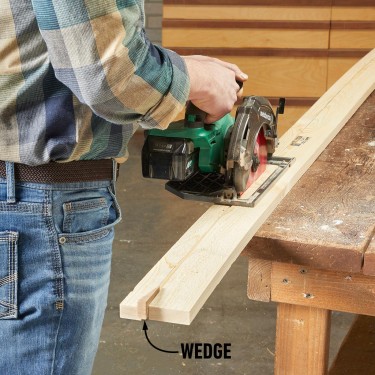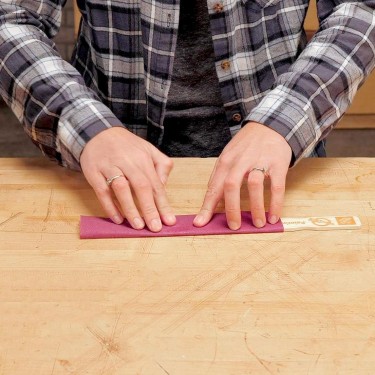From handy cutting tips to storage solutions, check out these brilliant hacksaw hacks.

Sandpaper Cutter
Cutting sandpaper is a quick way to dull your scissors or utility knife blade. Instead, I fastened a hacksaw blade to the edge of my workbench. I slipped a washer behind the blade at each of the mounting holes so a sheet of sandpaper to easily slides in behind the blade. I fold the paper where I want to cut, just as a reference. — Kim Boley.
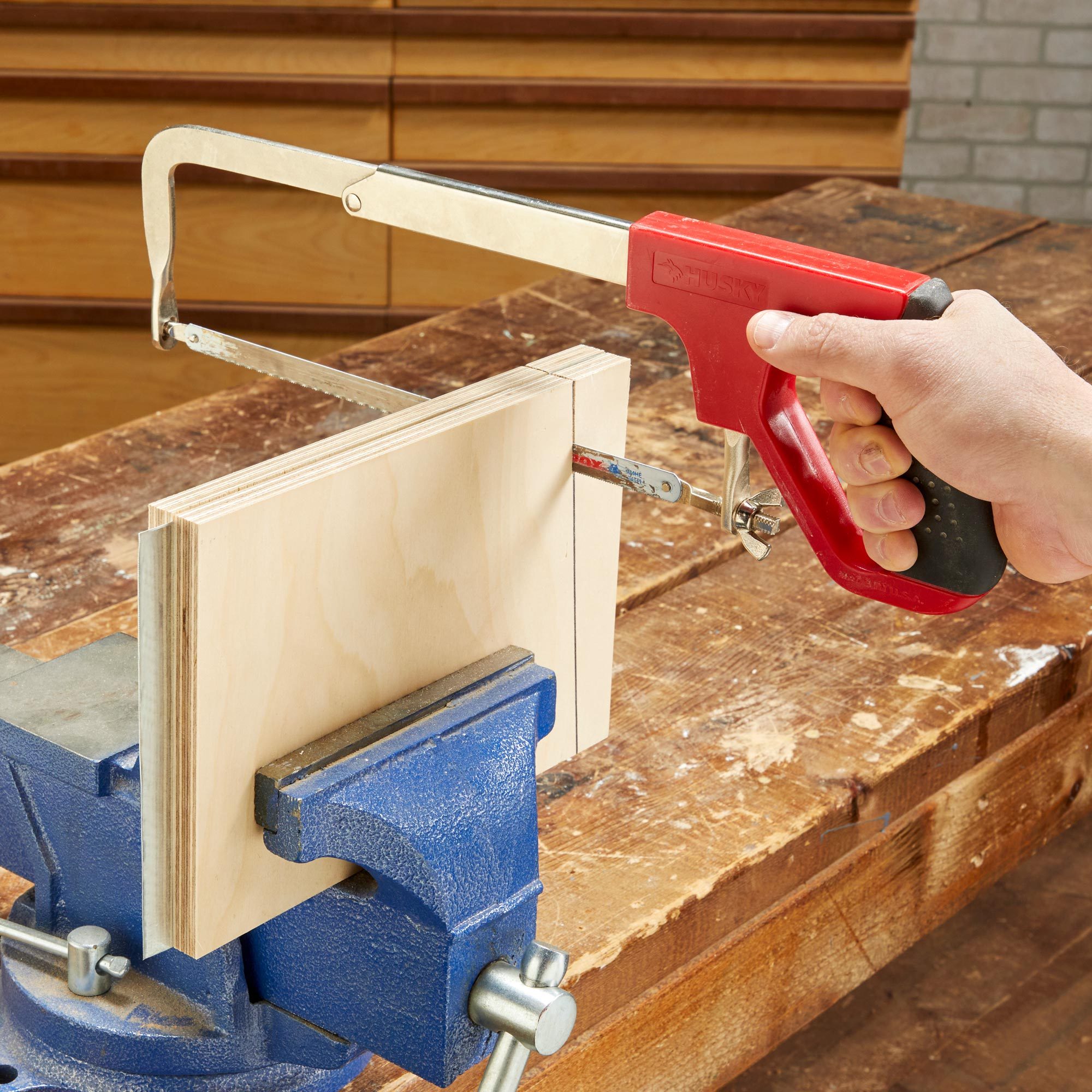
Sheet Metal Cuts With a Hacksaw
Cut sheet metal cleanly with a hacksaw by sandwiching the metal between two thin boards. Mark your pattern on the front board, clamp the sandwich in a vise, then saw on the marks through the entire sandwich at once. — Jack Kiser.
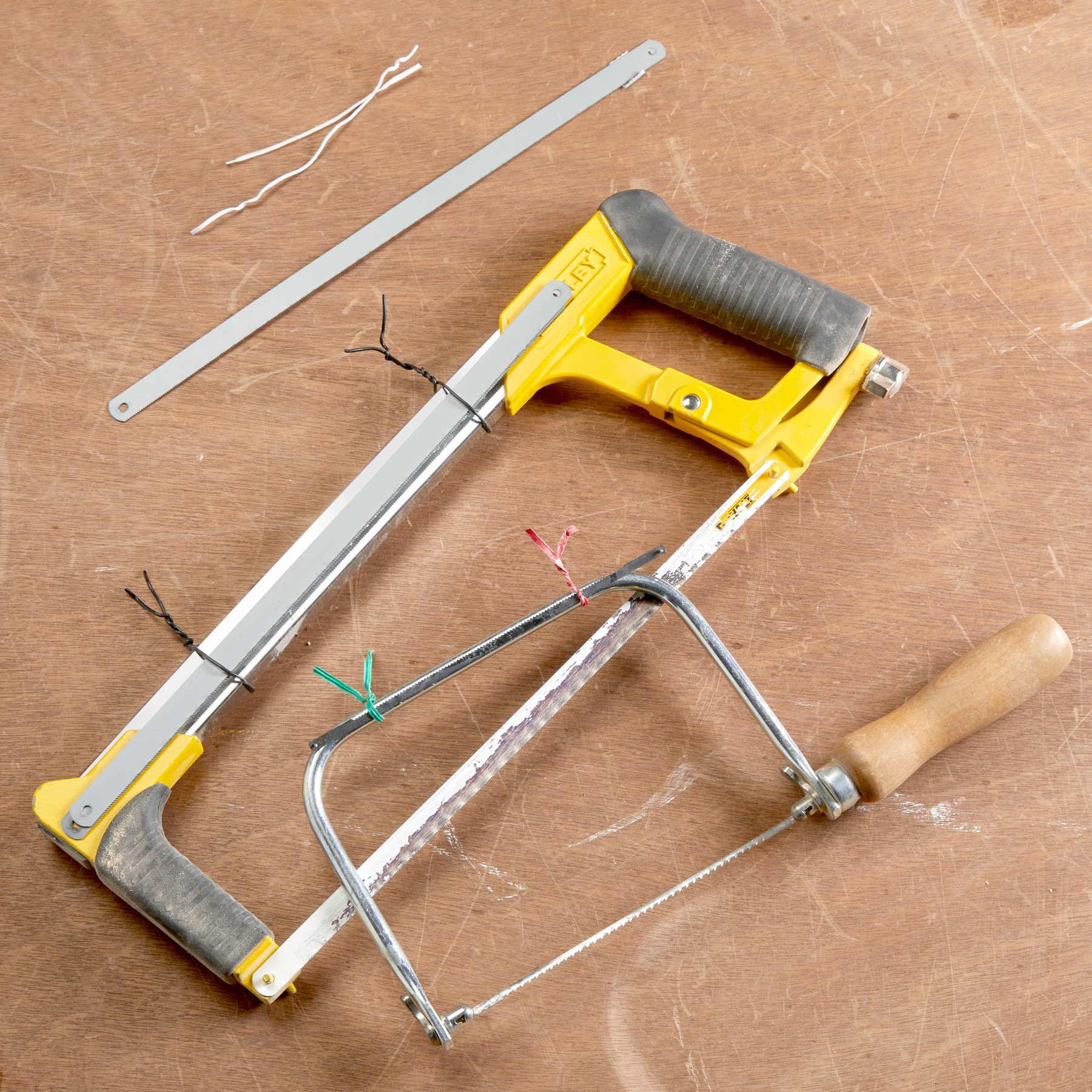
Twist Tie Hacksaw Hack
Here’s a sharp tip from reader George Sarna. Use tape or twist ties to attach spare blades to the frames of your hacksaw and coping saw. The next time a blade breaks or dulls, you won’t scratch your head trying to remember where you put the spares.
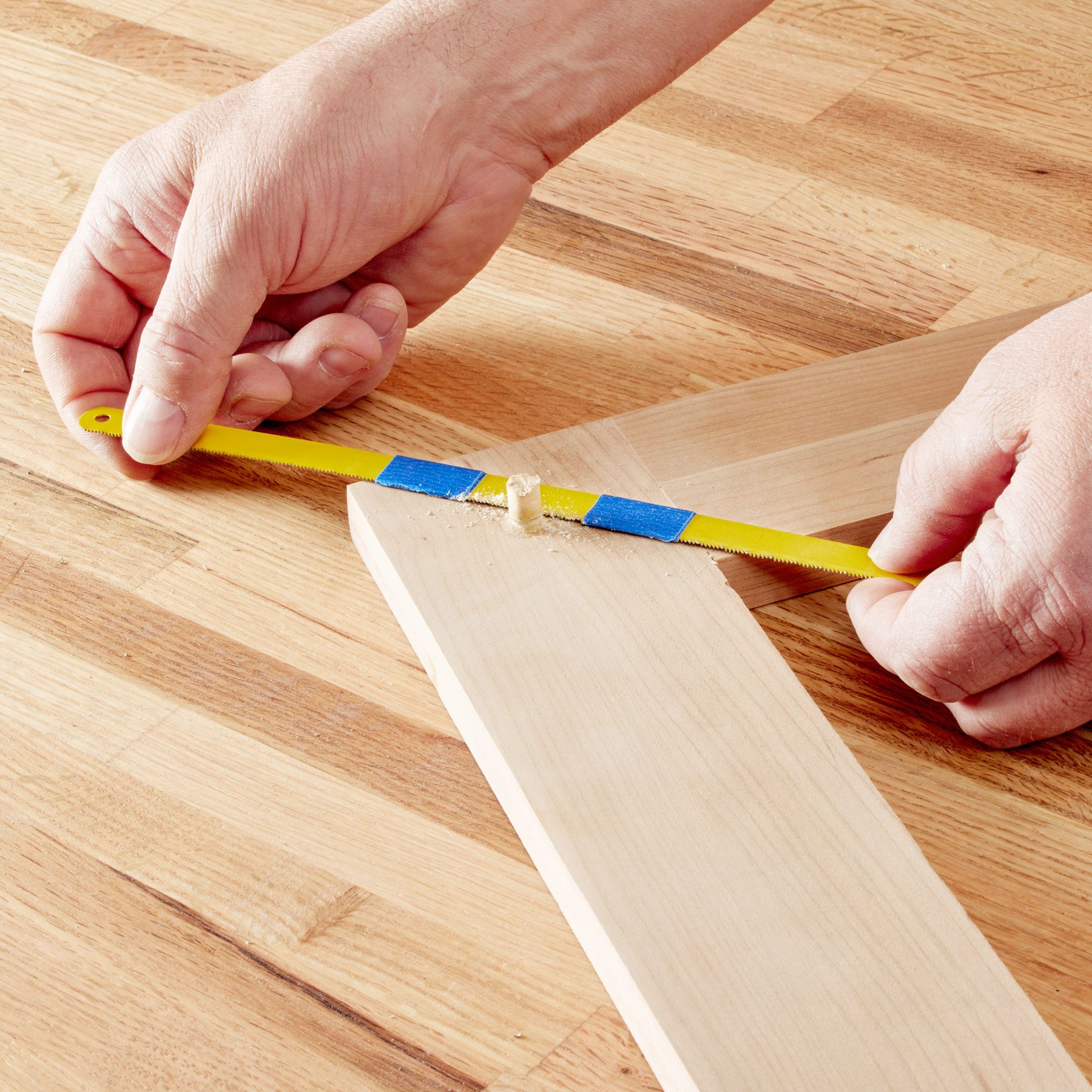
Flush-Cutting Hacksaw
Here’s how to trim dowel plugs flush on fine furniture projects without damaging the wood.
Apply a couple of layers of masking tape or a single layer of duct tape to a hacksaw blade with an untaped section between for sawing. While you’re sawing, the tape elevates the blade just enough so it won’t scratch the surrounding wood. After sawing, lightly sand the dowel to make it completely flush.

Stay-Put PVC Pipe Cutter
Here’s a nifty way to cut PVC pipe on the fly. Just make a couple of notches in the top of a five-gallon bucket. Set the pipe in the notches and you’ve got a stable spot for sawing. As a bonus, you can load up the bucket and carry your tools along, too!
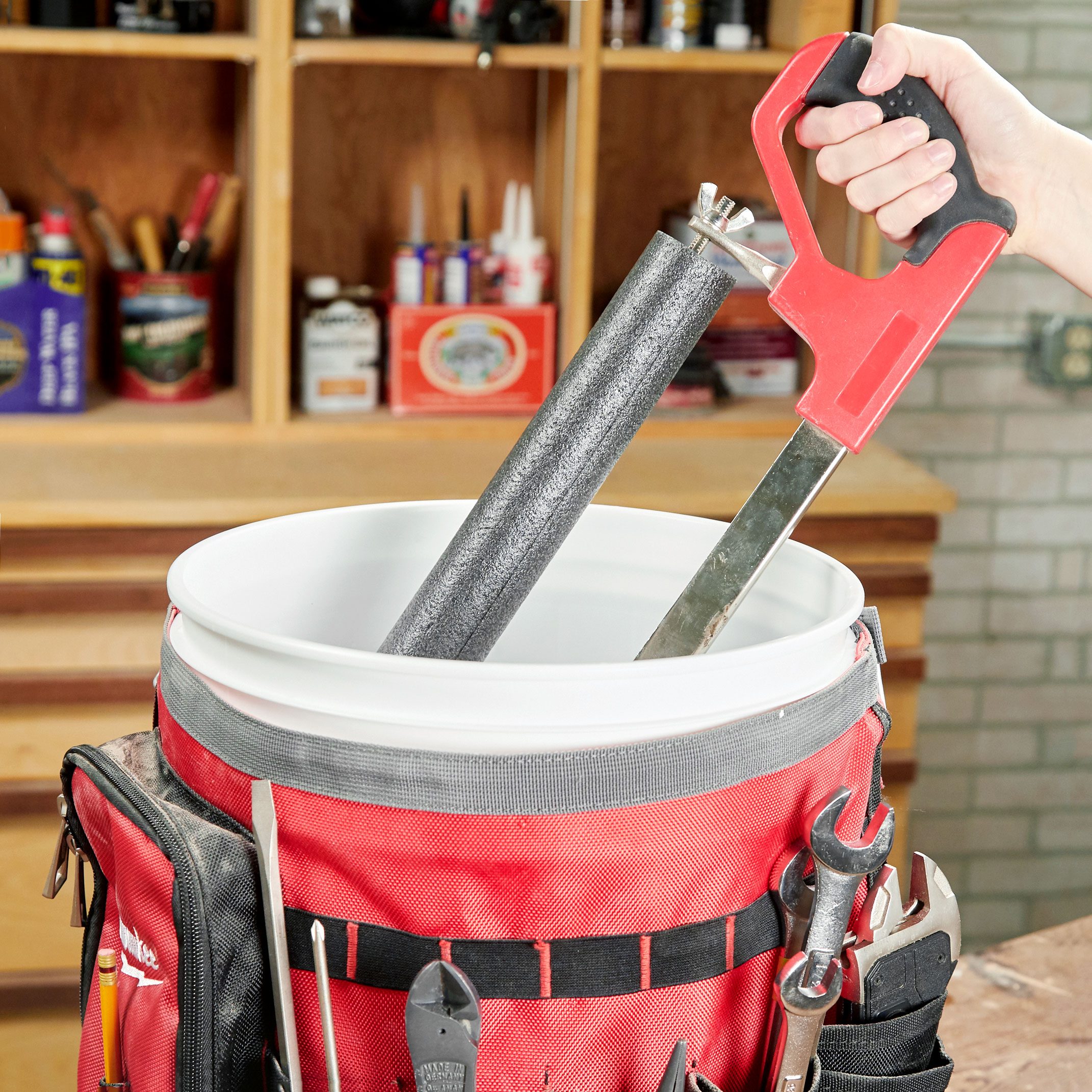
Hacksaw Blade Protection
To prevent damage to (or from) your hacksaw blade when you have it in a bucket full of tools, cover the blade with pipe insulation cut to length. Here’s a simple DIY storage binto keep your safety gear organized.
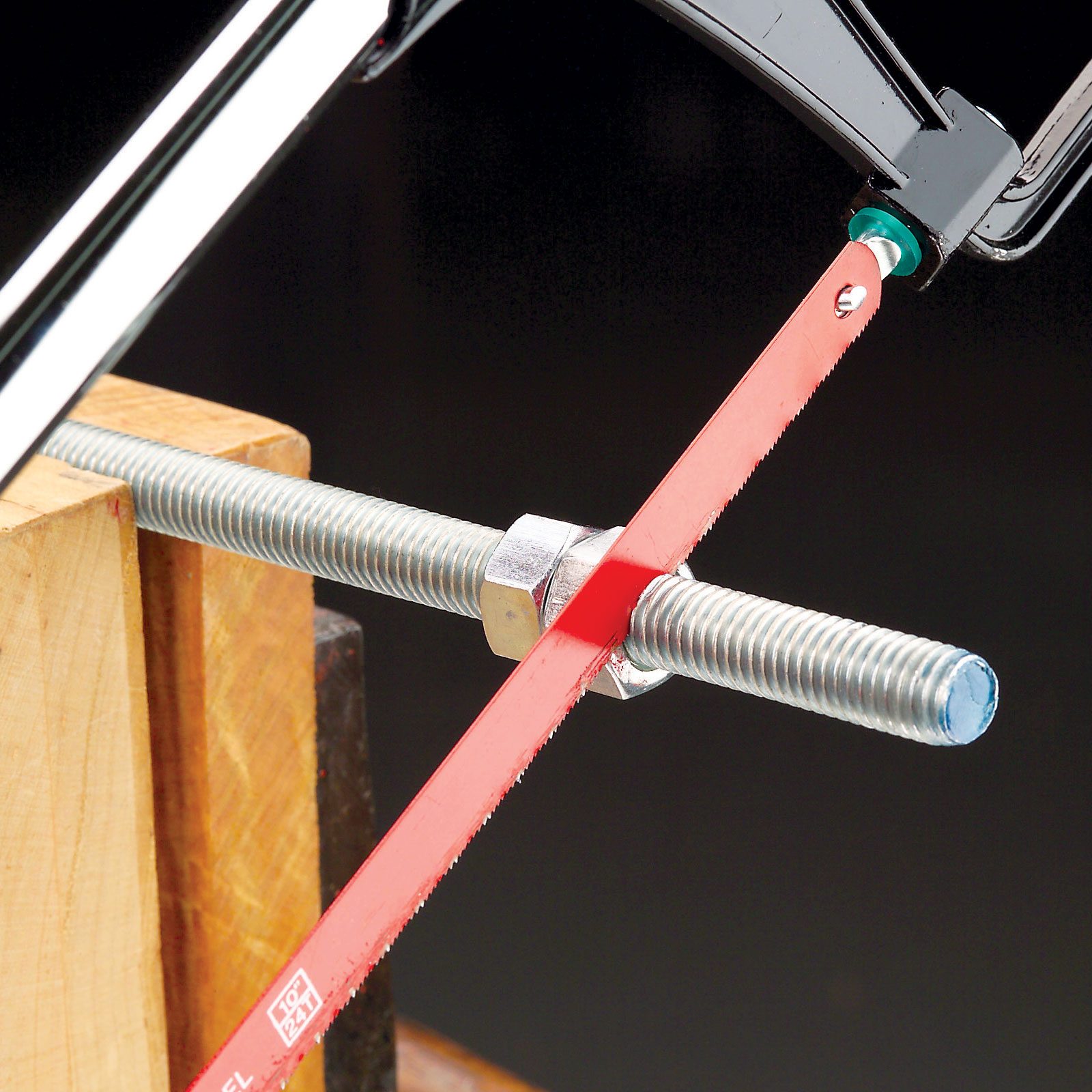
Cutting Threaded Rod
When you’re shortening a bolt or threaded rod with a hacksaw, you always mangle the threads at the sawn end, making it difficult to get a nut threaded onto it. Reader Larry LeMasters’ tip produces a much better ending.
Thread two nuts onto the bolt at the cutoff spot, tighten them against each other, then saw against the shoulder to create a clean right-angled cut. Next, loosen the nuts and file a slight bevel around the end to clear burrs created by sawing. Then spin off the nuts to clean and realign the threads. Your shorter bolt will work just like a new one from the box.
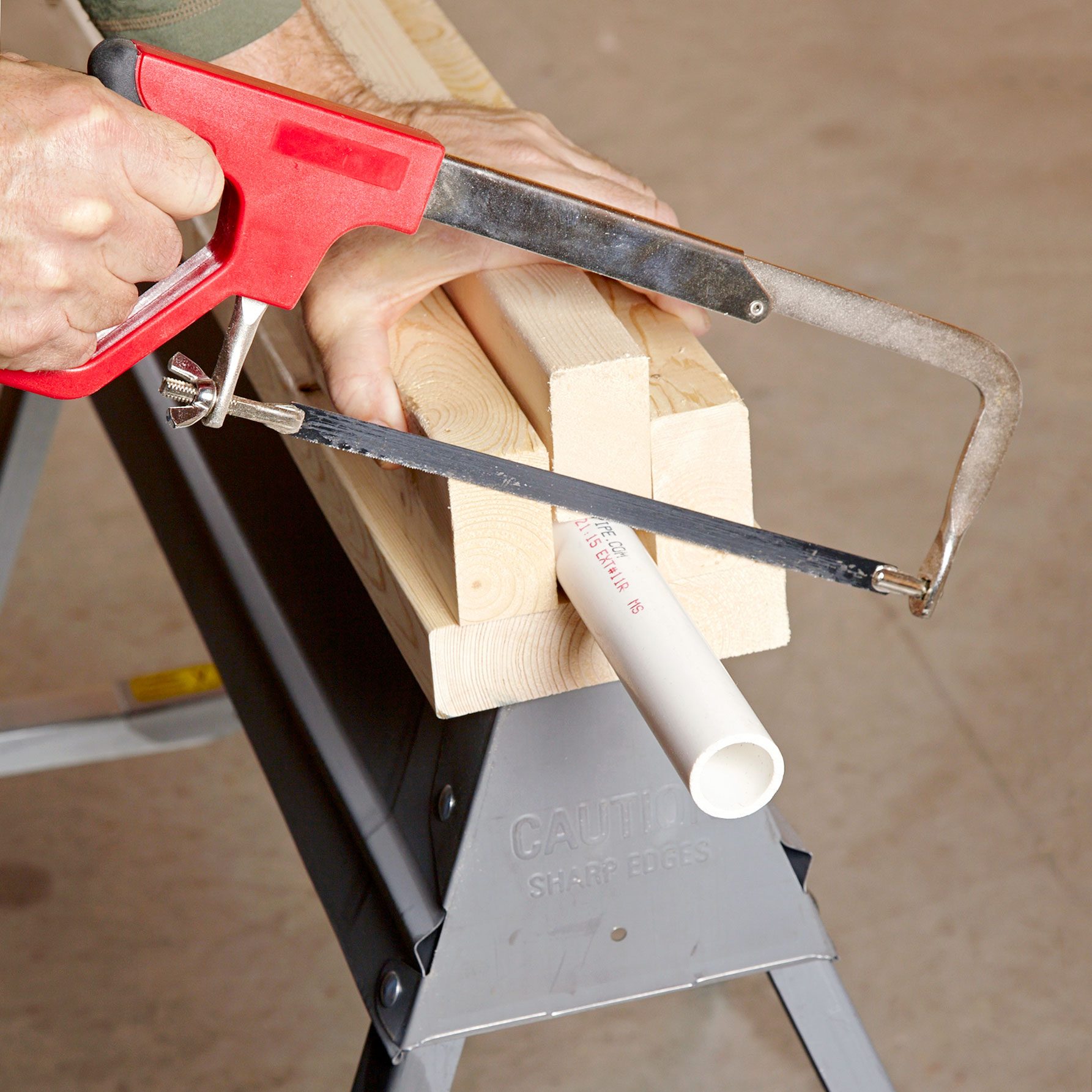
Pipe Friendly Top
Hey plumbers: Here’s a great setup for cutting pipe. Build a “U” out of a 2×6 and two 2x4s. Hold the pipes down with another 2×4 on top. It’s great because it can still be used as a regular sawhorse.
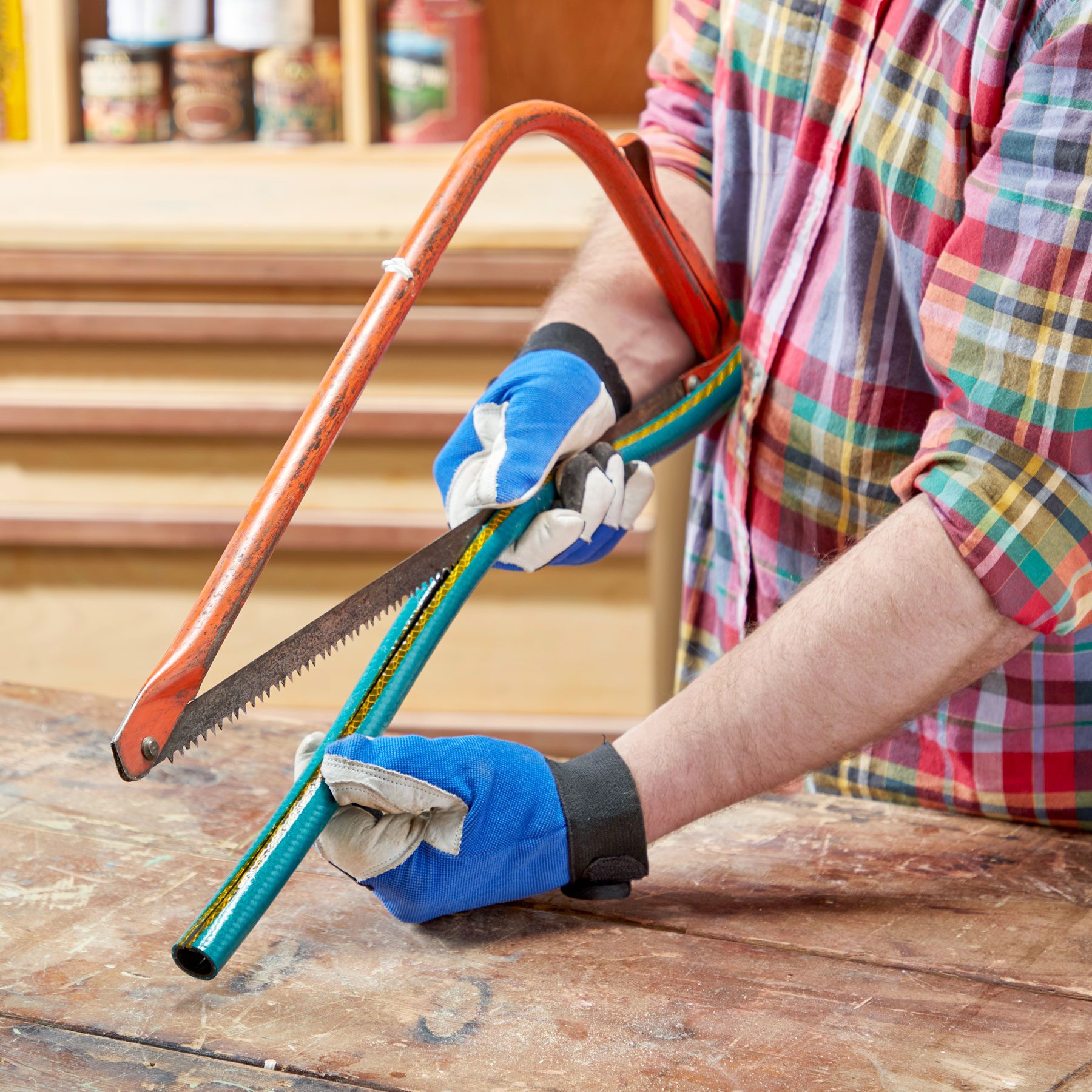
Slit a Length of Garden Hose
This might not be a hacksaw, but the premise is the same. Recycle an old garden hose by slitting open a length and using it as a blade cover for sharp saws and other bladed tools.

Clamp Conduit for Easy Cutting
Large slip-joint pliers are all you need to hold conduit firmly in place while you cut it.
Clamp the conduit to a workbench, sawhorse or even a wooden ladder step with pliers. Then mount a sharp, 32-tooth-per-inch hacksaw blade in your hacksaw frame and cut the conduit. After you make the cut, it’s important to remove any metal burrs from inside and outside the conduit.
Insert the blade of a screwdriver into the conduit and swivel it around to flatten any burrs on the inside of the pipe. Twist the jaws of slip-joint pliers around the outside of the conduit to remove burrs there.
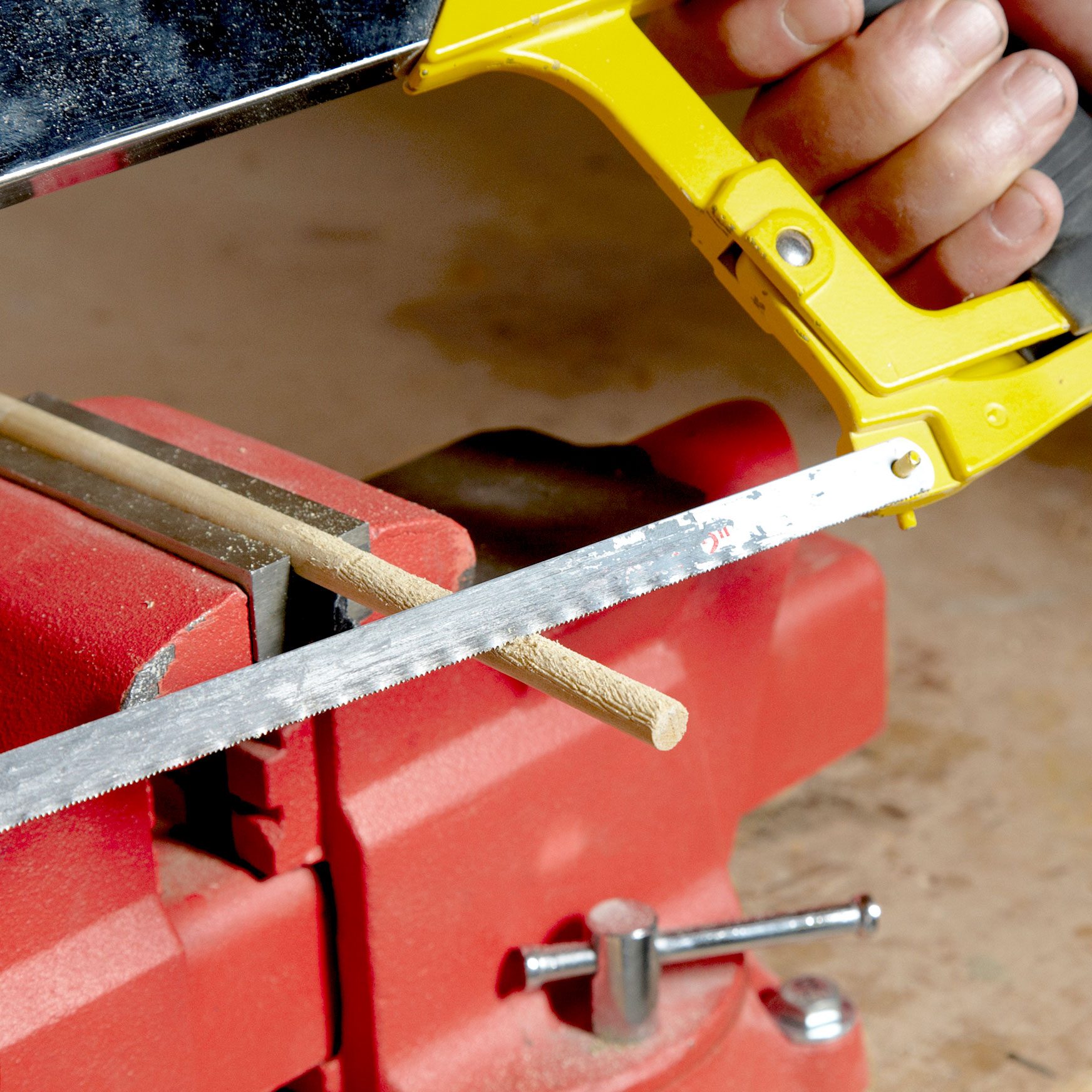
Make Fluted Dowels
No need to panic when you’re out of fluted dowels. If you need to glue a dowel and you’re out of the fluted version, just make your own. Put a smooth dowel in your vise and drag your hacksaw over it a few times to roughen up the surface. You’ll create the grooves that the glue and air need to escape when you drive in the dowel. — Billy Potter.
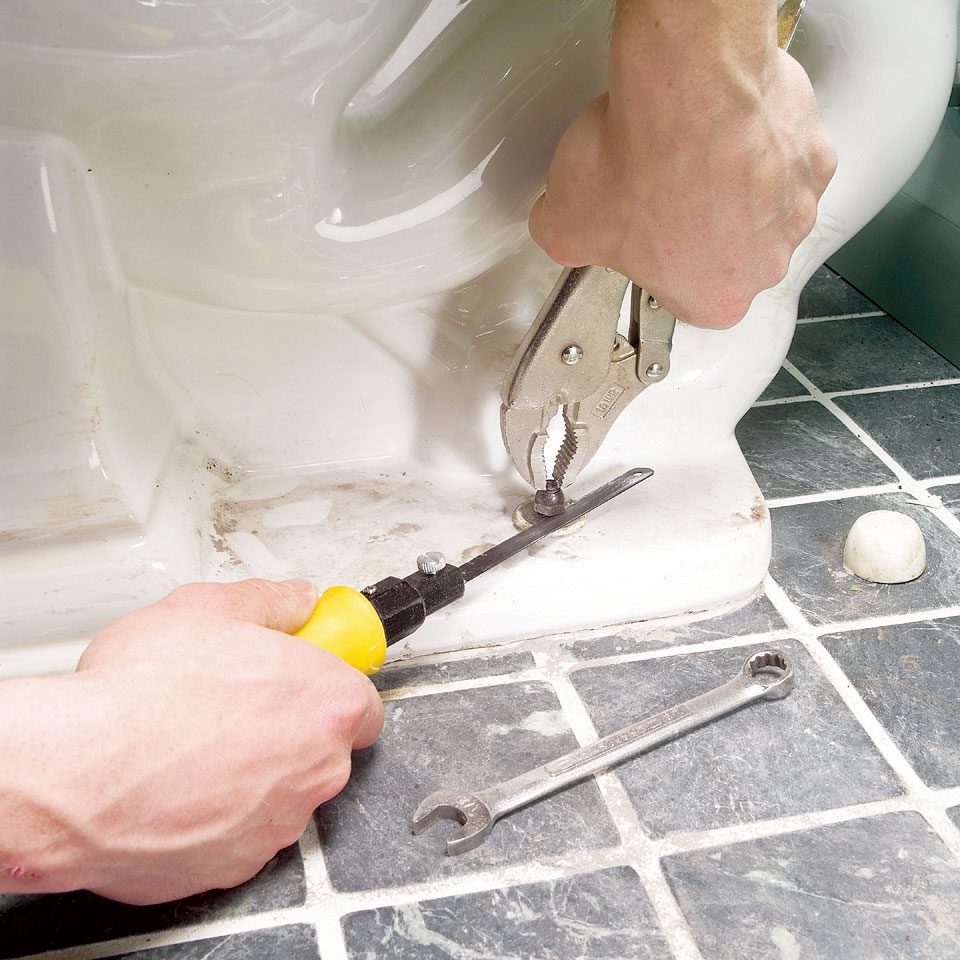
Cut Stubborn Parts
Corrosion and mineral deposits can lock parts together, making them almost impossible to disconnect. Often, the best solution is to cut the stubborn part. Either slice it off or cut kerfs in the part so you can break it off. A hacksaw blade works well.

